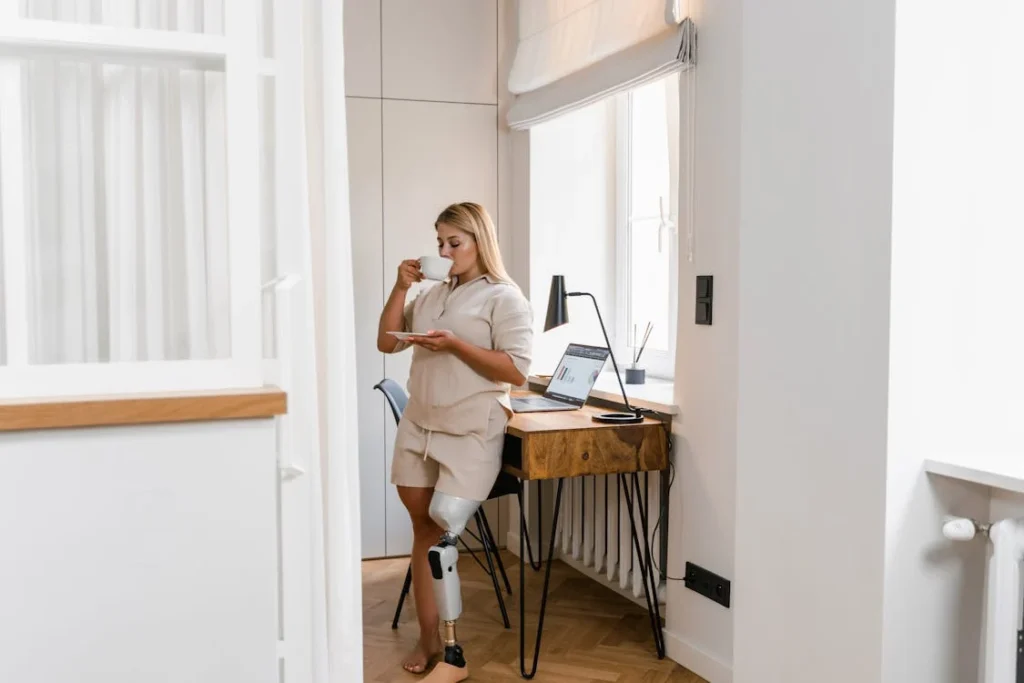Sometimes, the smallest changes can make the biggest difference. For people who use prosthetic limbs, the journey doesn’t stop at getting fitted. It continues every single day—with each step, each task, each moment they rely on their device to feel natural and supportive. Over time, though, even the best prosthesis can start to feel uncomfortable. Maybe the fit changes. Maybe walking feels harder. Maybe the limb just doesn’t feel like part of the body anymore.
That’s where a refit can make all the difference.
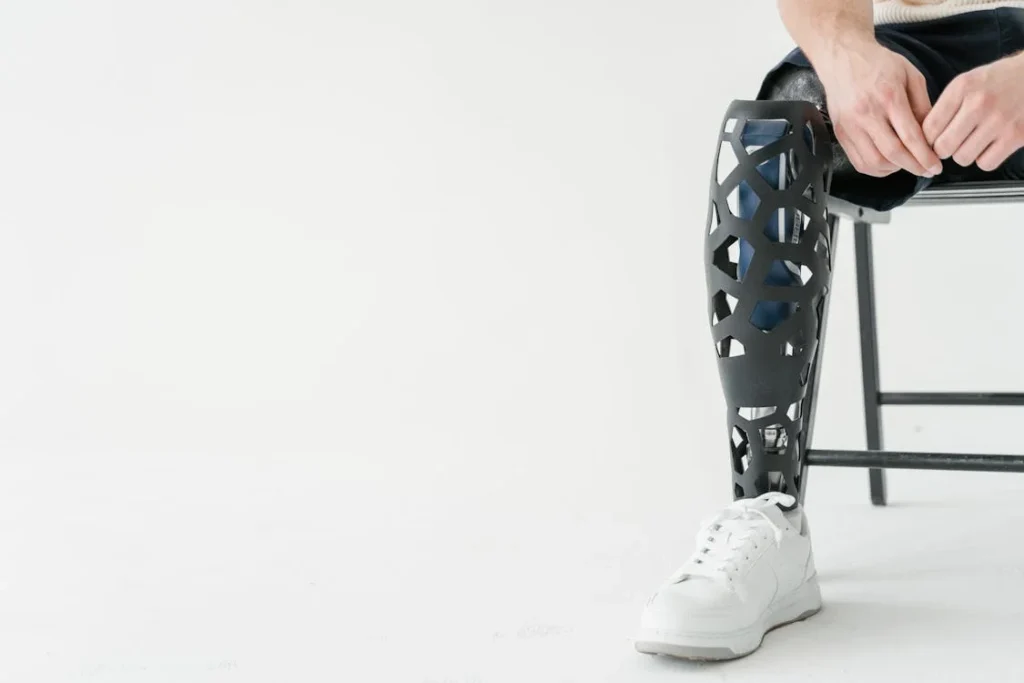
Aarav’s Journey: From Struggle to Stability
Life Before the Refit
Aarav was 28 when he lost his right leg below the knee in a road accident. He had always been active—cycling, working long shifts as a field engineer, and helping out on his family farm in Bihar.
His first prosthesis helped him get back on his feet quickly. At first, he was just relieved to walk again. But within a few months, things started to change.
Walking became harder. The socket began to feel loose in some places and tight in others. He developed a sore spot on the front of his shin.
Some days, he’d avoid long distances just to escape the aching. On especially humid days, the sweating made it even more uncomfortable, and he found himself limping slightly to ease the pressure.
It wasn’t immediate, but over time, Aarav began using his prosthetic leg less and less. He started planning his life around avoiding too much movement.
He was afraid to speak up. He thought maybe this discomfort was just part of the package.
The Turning Point
Aarav’s family noticed the change. He was quieter, less enthusiastic about work, and no longer joined the weekend cricket games. One day, his cousin suggested getting the prosthesis checked.
Aarav hesitated at first. The idea of going through adjustments again felt tiring. But eventually, he made an appointment at Omnify Prosthetics, one of Robobionics’ partner clinics.
At the clinic, the prosthetist asked questions that felt more personal than technical. They didn’t just look at the limb—they watched how he walked, how he shifted his weight, and how he responded to different surfaces.
After some detailed assessments, the team explained that his residual limb had changed shape slightly—a common and natural change, especially in the first year after amputation.
This meant that the old socket no longer matched his body well. It wasn’t a flaw in the limb or in Aarav—it was just something that needed attention. He wasn’t broken; the fit was.
A New Fit, A New Life
The refit process was simpler than Aarav expected. The new socket was shaped to match his current limb exactly. The foot was re-aligned to reduce strain on his knee.
Some new materials were added to help with moisture and reduce friction. He tested the new setup in the clinic and felt an instant change—not perfect, but better. More balanced. More controlled.
Over the next few weeks, Aarav started walking longer distances again. The limp faded away. He noticed he could go up stairs without pulling on the railing. One day, without thinking, he jogged to catch a bus.
It wasn’t a planned moment—it just happened. And that’s when he realized: the refit had given him back something more than mobility. It had given him trust in his body again.
He returned to work with more confidence. The field visits became easier. He even returned to cricket, something he’d quietly given up months ago. Every day didn’t feel perfect, but it felt doable.
What Aarav Learned
Looking back, Aarav wished he had spoken up sooner. He realized that discomfort is not something you have to live with. A prosthesis should feel like part of you—not a burden to manage.
He now encourages others in his village and community who use prosthetics to pay close attention to how they feel, and to not ignore small changes.
Aarav’s story reminds us that a refit isn’t just about better walking. It’s about rediscovering independence, regaining confidence, and rebuilding the parts of life that slowly slip away when movement becomes a struggle.
A proper refit can reconnect a person with the parts of themselves they thought they had lost.
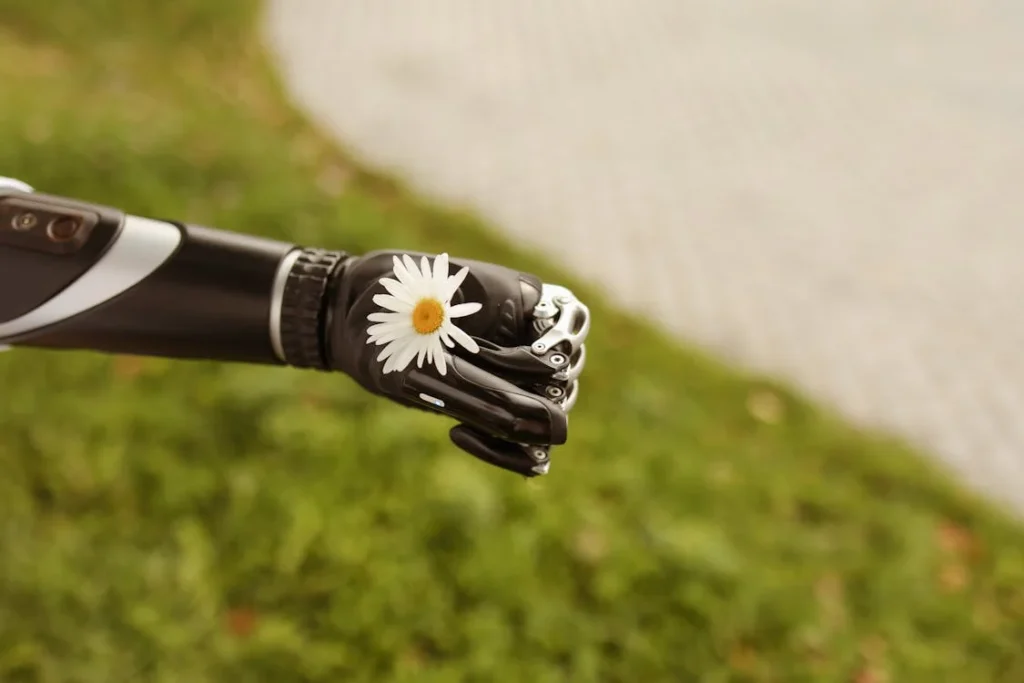
Meena’s Experience: When Small Adjustments Change Everything
Facing Daily Discomfort in Silence
Meena was 52 when she received her first prosthetic arm. She had lost her left hand in a workplace accident at a textile mill in Surat. While the initial trauma was difficult, Meena had always been resilient.
She focused on learning how to live independently again—cooking, dressing, and helping care for her granddaughter. Her prosthetic hand, a basic mechanical model, gave her a sense of self-reliance.
But over time, that confidence began to slip away. Simple activities like cutting vegetables or folding laundry felt awkward. The grip didn’t quite match her movements anymore.
The socket began to dig into her forearm, especially in the evenings after a full day’s use. Still, she didn’t complain. She told herself this was just how prosthetics worked.
It wasn’t pain that bothered her the most—it was the growing hesitation she felt before doing anything with her left arm. The limb that was meant to help her was starting to make life feel heavier.
Support That Listened
It was during a community outreach event by Robobionics that Meena met one of our rehabilitation specialists. They noticed she wasn’t using her prosthetic hand, even for simple tasks.
After a gentle conversation, Meena opened up about her discomfort. She hadn’t realized that a refit—even for an upper limb—could make such a difference.
She was referred to a nearby partner clinic for a reassessment. The team there didn’t rush the process. They watched how she moved around her home. They observed how she cooked, how she cradled her granddaughter, how she tried and failed to hold a spoon steadily with the prosthesis.
They asked her what she missed doing most. Her answer was soft, but clear: kneading dough. She hadn’t done it in over six months.
The Subtle Power of a Better Fit
Unlike her first fitting, which had been quick and one-size-fits-all, this time the process felt personal. Her new socket was sculpted to fit the natural resting shape of her forearm.
The weight distribution was changed slightly, making the prosthesis feel lighter. The grip was adjusted for easier control, and padding was added where the socket had been pressing into her skin.
It wasn’t a flashy transformation. There was no sudden “aha” moment. But what changed was her ease—her quiet confidence.
Meena began using her prosthetic hand again, first in small ways. Holding light kitchen tools. Steadying plates. Then came that long-missed act: kneading dough with two hands.
Her family noticed the shift before she did. She moved with less hesitation. Her face looked calmer in the evenings. She stopped hiding her prosthesis under shawls.
Refits Aren’t Just for the Young
Meena’s story is important because it speaks to a truth that’s often overlooked—older prosthesis users deserve the same comfort and precision as anyone else.
Age shouldn’t be a reason to settle for “good enough.” Everyone deserves to move with dignity, without pain or compromise.
She now tells other women in her community that it’s okay to ask for help. That it’s not weakness to want your prosthetic limb to work better. That comfort isn’t a luxury—it’s your right.
What Meena Wants You to Know
For Meena, the refit wasn’t just a technical fix. It was a restoration of self-worth. It helped her reclaim small joys—like serving homemade roti to her family—and gave her the confidence to use her prosthesis fully again.
She no longer sees it as something to tolerate, but something that supports her in the life she wants to live.
Her journey shows that even subtle improvements can transform your relationship with your prosthesis. A refit isn’t only for severe problems—it’s for anyone who feels their limb could do more, feel better, or fit more naturally into their day.
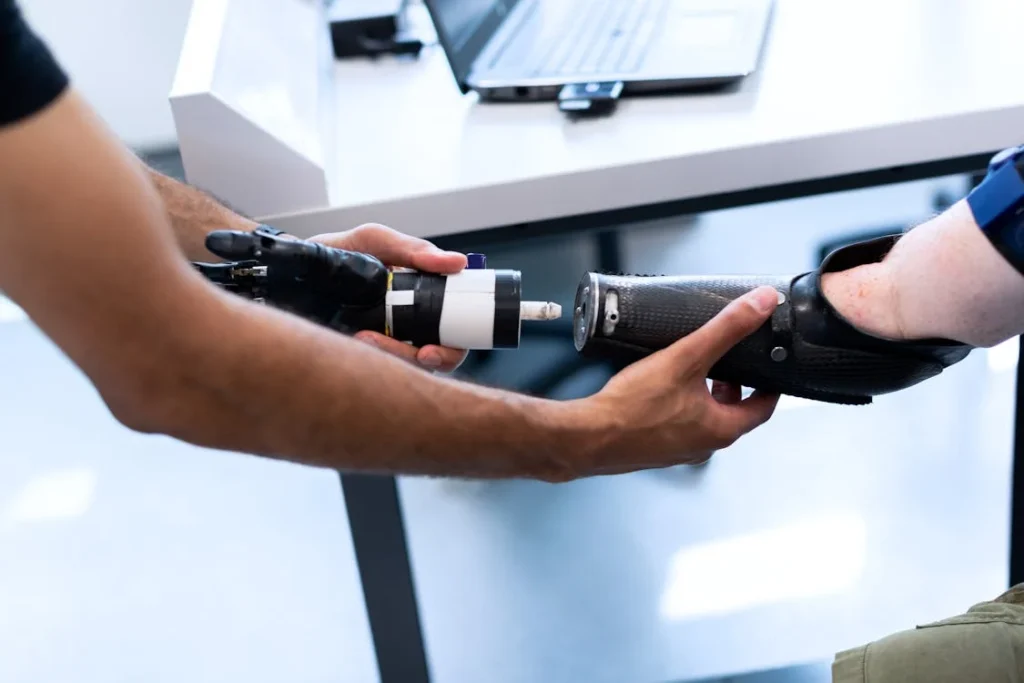
Rishi’s Story: From Limitation to Liberation
Living Life in Motion
Rishi was 19 when he first received his below-elbow prosthetic arm. A birth defect had left his left arm underdeveloped, and while he adapted quickly as a child, by his late teens, he wanted something more. Not just something functional—but something that would keep up with his pace.
He was a college student in Pune, always on the move, juggling classes, football matches, and long commutes. He wanted a prosthesis that could match his energy.
His first prosthetic arm was basic but got the job done. He could write, carry bags, and manage daily tasks. But over time, he noticed that the device began to slow him down. Typing felt clumsy.
Playing football became a risk, not a joy. The socket started to feel stiff, and some movements caused sharp pinches on his skin. It wasn’t painful all the time, but it distracted him constantly.
He kept pushing through it, convinced that prosthetic limbs weren’t really built for active lifestyles. In a way, he was right—but only because he hadn’t experienced what a properly refitted device could do.
Rewriting What’s Possible
During a college health fair, Rishi visited a Robobionics awareness booth. He wasn’t planning on talking about his prosthesis. But he ended up chatting with a rehab specialist who asked a simple question: “What would you do if your prosthesis didn’t hold you back?”
That question stuck with him. He started thinking less about what his prosthetic couldn’t do and more about what it should be doing.
A week later, he booked an evaluation with one of Robobionics’ partner clinics. During his assessment, he was surprised by how much time was spent watching him move—not just with the prosthesis, but without it too.
They asked about his sports, his studies, his commute. The refit wasn’t based on numbers or measurements alone—it was shaped around how he lived.
The Upgrade That Changed Everything
His refit involved multiple changes. The socket was made more flexible to allow better forearm rotation. A new wrist module gave him smoother grip control.
The limb was lightened with new composite materials, giving him better balance. These upgrades weren’t just technical—they were intentional. Built for speed, comfort, and movement.
When Rishi returned to campus with his refitted arm, he didn’t say anything. But his friends noticed. He typed faster. He didn’t stop mid-conversation to readjust his limb.
He began playing football again—not holding back, but charging forward, taking chances. One moment that stood out for him was scoring a goal with his balance foot after using his prosthesis to steady himself during a sprint.
That wasn’t just a win on the field—it was a personal victory. He finally felt like his prosthetic wasn’t slowing him down. It was part of his momentum.
Why Refits Matter for Active Users
Rishi’s story sheds light on a growing need. Many young prosthesis users don’t want just basic function—they want freedom, spontaneity, and performance.
A one-time fitting rarely meets these evolving needs. As users grow, become stronger, and take on more physical challenges, their prosthetics must evolve too.
A refit isn’t a luxury or an upgrade reserved for athletes. It’s a necessary step for anyone whose life is full of motion and ambition.
Whether it’s sports, art, or simply a busy academic schedule—your prosthesis should match the pace of your life.
What Rishi Believes Now
Today, Rishi is an advocate on his college campus. He often speaks to new students with disabilities, reminding them that settling for discomfort isn’t a badge of honor. He believes a prosthesis should grow with you—not hold you back.
And he wants others to know that a refit isn’t about fixing a mistake. It’s about adapting to who you’re becoming.
His story is proof that the right fit can unlock potential you didn’t even know you were missing.
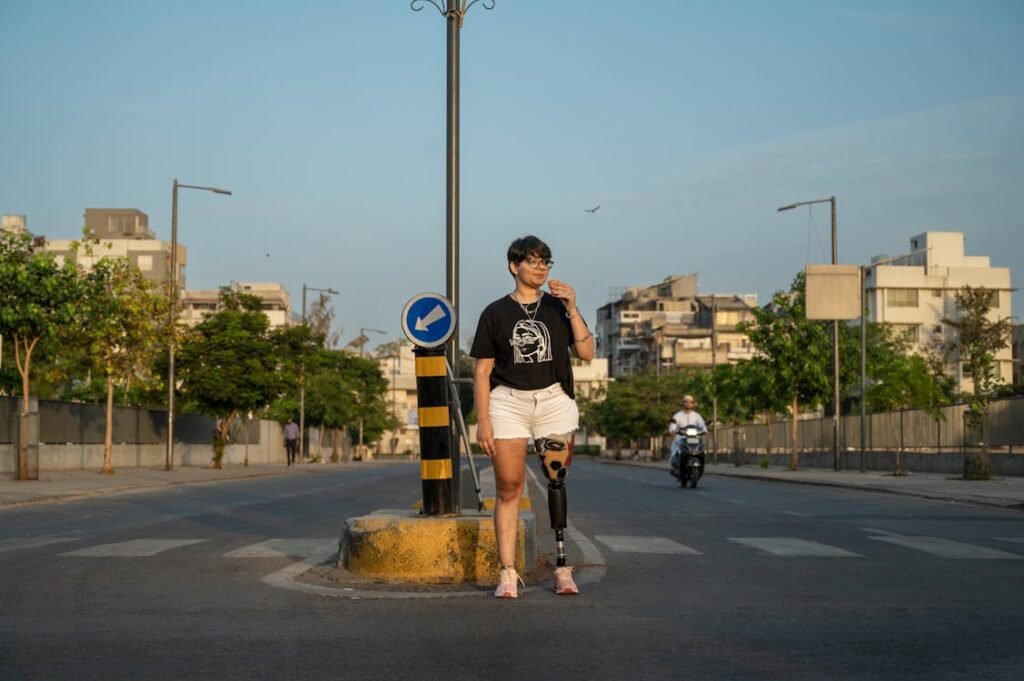
Fatima’s Refit: Finding Comfort After Chaos
A Season of Change
Fatima was 43 when she began noticing the difference. A year earlier, she had been fitted with a right above-knee prosthesis following a surgical amputation due to complications from diabetes.
At first, the prosthetic leg felt like a second chance. She worked hard during rehabilitation, took every step with determination, and even began walking independently around her home in Hyderabad.
But life didn’t stay still. Her weight shifted, her lifestyle changed, and the energy she once had started to dip. She began feeling sore after just short walks. Her lower back started aching, and the skin on her residual limb developed dry patches from friction.
But she kept putting off a visit. She was focused on taking care of her mother, managing household work, and running her home-based tailoring business. Her needs came last.
Over time, she started using the prosthesis less. She told herself that maybe her body just wasn’t adjusting anymore. Maybe it had been too long.
She began sitting more, walking less, and eventually relied on a walker at home. She didn’t talk about it much, but every step reminded her of how far she felt from her old self.
A Gentle Push
It was her son who eventually encouraged her to go back for a consultation. He had been reading about prosthetic refits online and realized that many of the problems she was facing weren’t just “part of getting older”—they were signs of a poor fit. He booked an appointment for her with a Robobionics-affiliated center nearby.
Fatima went reluctantly. But the moment she stepped into the clinic and the team began their evaluation, her attitude shifted. They asked about her routines, not just her prosthesis.
They listened to her frustrations without interrupting. They didn’t just look at her limb; they looked at her lifestyle, her posture, and the way she moved when she wasn’t thinking about being watched.
They explained how her socket had grown too tight around one side and too loose around another. This imbalance had been throwing off her gait, causing back strain.
They also noticed that her prosthetic knee was engaging slightly too early, forcing her to use more energy during each step.
The Fitting That Brought Relief
Fatima’s refit focused on restoring comfort, not just movement. A new custom-made socket relieved pressure on the sensitive parts of her limb.
The suspension system was updated to hold the prosthesis more gently but more securely. The prosthetic knee settings were adjusted to match her current weight and walking rhythm.
She stood up with her new setup and took a few cautious steps. At first, it felt unfamiliar. But after just a few minutes of walking, she noticed she wasn’t shifting her weight awkwardly anymore.
Her back didn’t tighten up like before. There was no more pinching. No more skin rubbing raw by the end of the day.
But the biggest change came days later—when she stood in the kitchen and cooked a full meal standing, without needing to sit halfway through.
It had been over six months since she’d done that. The feeling wasn’t just physical. It was deeply emotional.
Healing Beyond the Limb
Fatima’s refit wasn’t just about mechanical improvement. It helped her reconnect with a part of herself she thought she had lost.
She began using her prosthesis more regularly again—not because she forced herself to, but because it felt better. She stopped avoiding trips to the market. She stood straighter. She felt more in control.
More importantly, she stopped feeling like a burden. That weight—the emotional one—was heavier than the physical pain.
But the refit gave her permission to hope again. It reminded her that aging or chronic illness doesn’t mean giving up on comfort, movement, or purpose.
What Fatima Wants to Share
Fatima now shares her story with other women in her support group. She reminds them that pain is not something to accept silently.
That a prosthesis should feel supportive, not punishing. That no matter how long it’s been since your first fitting, it’s never too late for a second look.
Her experience proves that even in moments of doubt or fatigue, small changes can bring back freedom—not just in your body, but in your heart.

The Emotional Impact of a Refit: More Than Just Mechanics
When the Body Hurts, the Mind Follows
Many prosthesis users talk about the physical side of discomfort—rubbing, misalignment, pain while walking—but what often goes unspoken is the mental toll. When your prosthesis doesn’t fit well, it doesn’t just limit your movement.
It makes everyday life feel harder than it should be. Over time, that discomfort builds into hesitation. Hesitation builds into avoidance. And avoidance, for many, grows into isolation.
There’s a kind of quiet frustration that settles in when something meant to help you becomes a source of stress. You start second-guessing every move. You plan outings based on walking distance or seating availability.
You feel exhausted not because of the distance walked, but because of the emotional strain that comes with each step. You might even begin to withdraw from social life—not because you want to, but because your energy feels spent before you’ve even left the house.
A poorly fitting prosthesis can amplify anxiety and lead to self-doubt. You might question whether your body is the problem. You might feel guilty about complaining.
But it’s important to understand that these emotional reactions are real, valid, and deeply connected to your physical experience.
Rebuilding Confidence Through Comfort
A refit isn’t just about changing hardware. It’s about restoring trust—trust in your prosthesis, trust in your body, and trust in your ability to move through the world without fear.
For many users, the moment they feel a refitted limb respond correctly to their movement, something shifts internally. That first smooth step, the one that doesn’t hurt or feel forced, often brings more than relief. It brings hope.
Psychological readiness to use a prosthesis fully can only grow when the device feels like part of you, not something you’re constantly managing or adjusting.
A well-fitted prosthesis reduces the amount of “mental space” it takes up during the day. Instead of focusing on discomfort, you’re free to focus on your work, your family, your surroundings—your life.
This return to natural movement is often accompanied by a lift in mood. Energy improves. People smile more. They report sleeping better.
The act of walking, cooking, commuting, or playing with a child becomes enjoyable again, not something you brace yourself for.
Emotional Safety Encourages Physical Progress
Prosthetists often see it firsthand—when users feel emotionally supported, their physical recovery moves faster. A person who feels heard, understood, and respected is more likely to engage in therapy, to push themselves gently, and to speak up when something doesn’t feel right.
Refit appointments that take time to ask about life outside of the limb—work, hobbies, mood, self-esteem—often unlock insights that pure technical assessments miss.
When clinics and care teams treat prosthesis refits as full-body, full-life experiences, users are more likely to report success.
They regain agency over their movement. They stop shrinking away from their environment. They become more willing to challenge themselves, and more resilient when setbacks come.
This process builds something that no socket or joint can provide: inner strength.
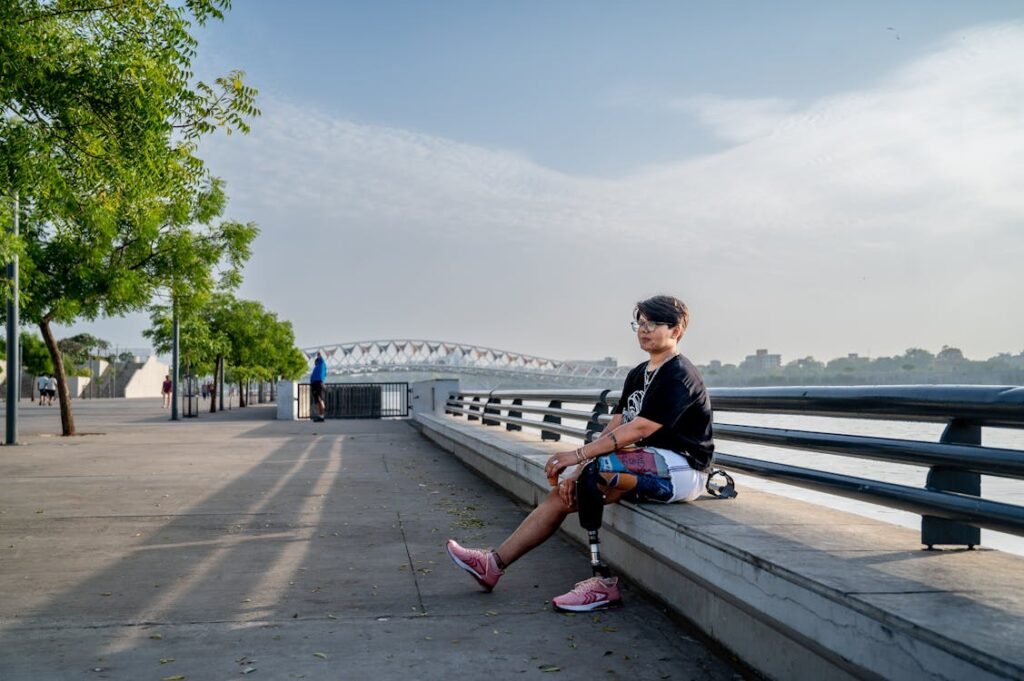
Moving Forward: Why Refits Are a Vital Part of Your Journey
The Prosthesis Is Not the End Goal—You Are
When someone is first fitted with a prosthesis, it can feel like the end of a long and painful road. But in reality, it’s just the beginning. As your body heals, grows, and changes, so should your prosthetic device. What worked in month one may no longer work in year two. And that’s not failure—it’s simply life.
Refits are not signs that something went wrong. They’re signs that you’re moving forward. They show that you’re living, adapting, and expecting more from your mobility. That mindset—of checking in, asking questions, and seeking better solutions—is what leads to long-term success.
You deserve to move with ease. You deserve comfort, balance, and confidence in every step or grip. Whether your goal is to walk your child to school, stand through a long shift at work, dance at your sister’s wedding, or simply go through a day without discomfort—a refit can bring that goal closer.
A Better Fit Isn’t a Luxury—It’s Your Right
Too many people accept pain, awkwardness, or reduced function as “normal.” But they shouldn’t have to. A properly fitted prosthesis can—and should—feel like an extension of your body. When it does, you stop noticing the device and start noticing the freedom it gives you.
If something doesn’t feel right, speak up. If your prosthesis feels outdated, heavy, or uncomfortable—get it looked at. Even small tweaks can change the way you move, live, and see yourself.
At Robobionics, we’ve seen how powerful a refit can be. It’s not about adjusting parts—it’s about restoring possibility. When the fit is right, everything else starts to fall into place.
So, wherever you are in your prosthetic journey, remember this: it’s never too late to feel better, move better, and live better.
Conclusion
A refit is not just a technical adjustment—it’s a turning point. For many, it brings relief where there was once discomfort, confidence where there was hesitation, and freedom where there was limitation. Every story, whether quiet or bold, shows that life with a prosthesis is not static. As your body changes, your needs evolve. And your prosthesis should evolve with you.
Choosing to seek a refit is not a sign of weakness or failure. It’s an act of care—toward your body, your comfort, and your quality of life. Whether you’re returning to a favorite activity, finding ease in daily movement, or simply seeking a better fit, the change you deserve is possible.
If your prosthesis doesn’t feel like it should, don’t wait. Small changes can make a world of difference. Your comfort is not optional. It’s essential.



